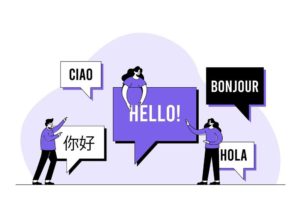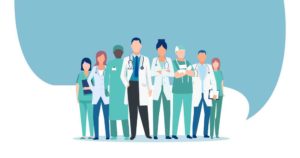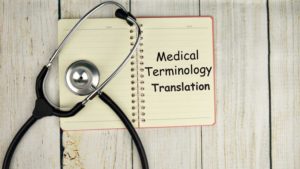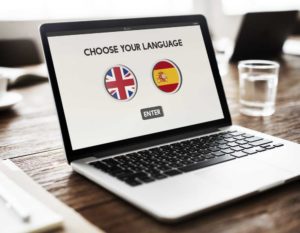In our increasingly globalised world, healthcare professionals often encounter patients from diverse linguistic backgrounds. Effective communication is vital in the medical field, where misunderstandings can have severe consequences. This article delves into the world of medical translator apps, exploring their significance, key features, and benefits, while also providing facts and figures to enhance your understanding.
Why Medical Translator Apps are Important?
In today’s healthcare landscape, medical translator apps have emerged as indispensable tools, enabling seamless communication between healthcare providers and patients who speak different languages.
Consider this: according to the U.S. Census Bureau, over 350 languages are spoken in American homes. In the United Kingdom, over 300 languages are spoken in London alone. The need for language access in healthcare is evident, and medical translator apps address this demand.
Understanding the Diversity in Healthcare
Healthcare institutions cater to a diverse population, and it’s essential to provide quality care to all patients, regardless of their language.
Figures from the World Health Organization (WHO) indicate that globally, over 8% of healthcare providers experience language barriers with their patients. These barriers can lead to miscommunication, misdiagnoses, and compromised care.
In order to overcome this issue medical translator apps are one of the most important tools and can be life-saving in such situations.
Key Features of Medical Translator Apps
Medical translator apps are invaluable tools in the healthcare industry. They offer a range of essential features that help healthcare professionals bridge language gaps effectively. Let’s delve into these key features with detailed explanations and examples:

1. Extensive Language Support
A fundamental requirement for any medical translator app is extensive language support. The more languages the app covers, the more versatile and inclusive it becomes. Leading medical translator apps support over 100 languages, ensuring healthcare professionals can communicate effectively with a wide range of patients.
Emtran is a good example in this regard. It provides services in all the major languages like Spanish, Chinese, Mandarin, Arabic, and French. Other than these it also provides services in a number of small and local languages.
2. Robust Medical Vocabulary Database
A robust medical vocabulary database is a non-negotiable feature. In the medical field, precision is paramount. Medical translator apps must offer accurate translations of complex medical terms and phrases.
Some apps like Emtran boast vocabularies exceeding 200,000 medical terms, demonstrating their commitment to accuracy.
3. Offline Mode for Critical Situations
Imagine a scenario where a patient with limited English proficiency needs immediate medical attention in a remote area with no internet access.
Medical translator apps come to the rescue with offline functionality. These apps can be invaluable in emergencies, allowing healthcare providers to access critical translations without an internet connection.
4. Pronunciation Assistance for Precision
Correctly pronouncing medical terms can be challenging, even for native speakers. Medical translator apps often include audio features that guide healthcare professionals and patients in pronouncing critical terms accurately. This ensures that both parties fully understand the conversation.
Requirements for a Medical Translator App
 When considering the requirements for a medical translator app, it’s essential to delve deeper into the crucial aspects that underpin the reliability and effectiveness of these tools.
When considering the requirements for a medical translator app, it’s essential to delve deeper into the crucial aspects that underpin the reliability and effectiveness of these tools.
Let’s explore each requirement in detail, with practical examples to illustrate their significance.
- The Crucial Role of Accuracy and Reliability
- User-Friendly Interface for Seamless Communication
- Ensuring Data Security and Patient Privacy
- Compatibility Across Multiple Devices
- Affordable Pricing Plans for Wider Access
1. The Crucial Role of Accuracy and Reliability
Accuracy is the linchpin of medical translator apps. According to a study published in the Journal of General Internal Medicine, misunderstandings in healthcare communication occur in approximately 20% of encounters involving patients with limited English proficiency.
Medical translator apps must provide reliable translations in real time to prevent such errors.
2. User-Friendly Interface for Seamless Communication
Healthcare professionals work in high-pressure environments where every second counts. A user-friendly interface is essential to allow quick and efficient access to translations.
A study by the Journal of Medical Internet Research found that healthcare providers highly value user-friendly interfaces in medical translator apps.
For instance, in an emergency room, a nurse needs to communicate with a non-English-speaking patient about their symptoms and allergies.
A convoluted interface that requires multiple steps to access the necessary translation can cause delays in care. A user-friendly medical translator app with an intuitive interface ensures that vital information can be communicated swiftly.
3. Ensuring Data Security and Patient Privacy
In healthcare, patient privacy and data security are sacrosanct. Medical translator apps should adhere to strict data protection regulations, such as the Health Insurance Portability and Accountability Act (HIPAA) in the United States.
Ensuring data security builds trust between healthcare providers and patients.
4. Compatibility Across Multiple Devices
A doctor in a remote clinic might prefer using a tablet for its larger screen to display translations clearly. In contrast, a nurse in a bustling hospital may rely on a smartphone for quick access.
A medical translator app that adapts seamlessly to these various devices ensures that healthcare providers can communicate effectively, regardless of their preferred technology.
5. Affordable Pricing Plans for Wider Access
Affordability is a significant consideration for healthcare institutions. The American Hospital Association states that many healthcare facilities operate on tight budgets.
Therefore, medical translator apps should offer flexible pricing plans, ensuring accessibility to a broad range of healthcare providers.
Benefits of Using Medical Translator Apps
Medical translator apps offer a plethora of benefits that are not only transformative but also essential in the healthcare sector. Let’s delve deeper into these advantages with real-world examples to provide a comprehensive understanding.
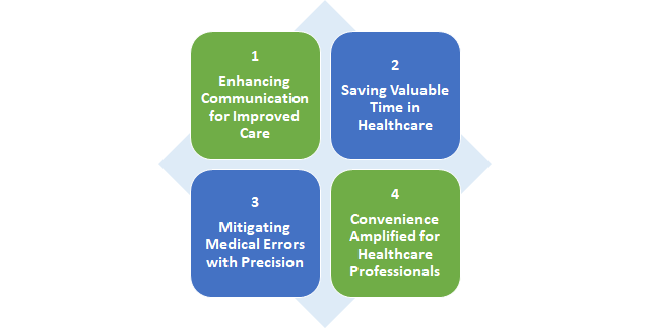
1. Enhancing Communication for Improved Care
Imagine a scenario where a Spanish-speaking patient arrives at a hospital in an English-speaking country with a critical condition.
The healthcare providers need to quickly understand the patient’s symptoms and medical history to make accurate decisions. Here, a medical translator app comes to the rescue, instantly translating the patient’s information into English.
This enables healthcare professionals to make informed decisions and provide timely care, significantly improving the patient’s chances of recovery.
2. Saving Valuable Time in Healthcare
Efficiency is vital in healthcare, and these apps save valuable time by providing instant translations.
A study published in the Journal of Medical Internet Research reported that medical translator apps reduced translation time by up to 50%, allowing healthcare providers to focus on providing care rather than struggling with language.
3. Mitigating Medical Errors with Precision
Accurate translations reduce misunderstandings, which, in turn, mitigate the chances of medical errors. The Journal of General Internal Medicine reported that limited English proficiency patients are more likely to receive the wrong medication when communication is compromised.
Medical translator apps play a pivotal role in improving patient safety and the overall quality of healthcare.
4. Convenience Amplified for Healthcare Professionals
Medical translator apps offer convenience, making it easier for healthcare professionals to communicate with patients from diverse linguistic backgrounds.
This convenience is reflected in the high adoption rates. According to the Journal of Medical Internet Research, 75% of healthcare providers reported using medical translator apps in their practice.
Conclusion
Medical translator apps are transformative tools in the healthcare sector, effectively bridging language gaps and ensuring effective communication.
When selecting a medical translator app, healthcare institutions should carefully consider the key features, requirements, and potential benefits they offer, all while keeping in mind the impressive adoption rates and positive impacts they’ve had on healthcare worldwide.

